去年曾写过一篇DQN经验池模块编写的博文:
强化学习算法之DQN算法中的经验池的实现,experience_replay_buffer部分的实现
最近又看到了一个经验池实现的代码,把这两个实现做了一下对比:
memory.py 新的经验池实现代码:

import numpy as np Transition_dtype = np.dtype([ ('timestep', np.int32), ('state', np.uint8, (84, 84)), ('action', np.uint8), ('reward', np.float32), ('nonterminal', np.bool_)]) blank_trans = ( 0, np.zeros((84, 84), dtype=np.uint8), 0, 0.0, False) class ArrayMemory(): def __init__(self, size): self.index = 0 self.size = size self.full = False # Used to track actual capacity # Build structured array self.data = np.array( [blank_trans] * size, dtype=Transition_dtype) def append(self, sarst_data): # Store data in underlying data structure self.data[self.index] = sarst_data self.index = (self.index + 1) % self.size # Update index # Save when capacity reached if self.index == 0: self.full = True # Returns data given a data index def get(self, data_index): return self.data[data_index % self.size] def total(self): if self.full: return self.size else: return self.index class Replay(): def __init__(self, args): self.transitions = ArrayMemory(args.memory_capacity) self.t = 0 # Internal episode timestep counter self.n = 1 # td(0) self.history_length = args.history_length self.discount = args.discount self.capacity = args.memory_capacity self.reward_n_step_scaling = np.array([self.discount ** i for i in range(self.n)]) def append(self, frame_data, action, reward, terminal): """ Adds state and action at time t, reward and terminal at time t + 1 """ # Only store last frame and discretise to save memory self.transitions.append((self.t, frame_data, action, reward, not terminal)) if terminal: self.t = 0 # Start new episodes with t = 0 else: self.t += 1 # Returns the transitions with blank states where appropriate def _get_transitions(self, idxs): transition_idxs = np.arange(-self.history_length + 1, self.n + 1) \ + np.expand_dims(idxs, axis=1) transitions = self.transitions.get(transition_idxs) transitions_firsts = transitions['timestep'] == 0 blank_mask = np.zeros_like( transitions_firsts, dtype=np.bool_) for t in range(self.history_length - 2, -1, -1): # e.g. 2 1 0 # True if future frame has timestep 0 blank_mask[:, t] = np.logical_or( blank_mask[:, t + 1], transitions_firsts[:, t + 1]) for t in range(self.history_length, self.history_length + self.n): # e.g. 4 5 6 # True if current or past frame has timestep 0 blank_mask[:, t] = np.logical_or( blank_mask[:, t - 1], transitions_firsts[:, t]) transitions[blank_mask] = blank_trans return transitions # Returns a batch of valid samples def _get_samples(self, batch_size, n_total): idxs = [] while len(idxs) < batch_size: idx = np.random.randint(0, n_total - 1) # Uniformly sample if (self.transitions.index - idx) % self.capacity >= self.n and \ (idx - self.transitions.index) % self.capacity >= self.history_length - 1: idxs.append(idx) # Retrieve all required transition data (from t - h to t + n) transitions = self._get_transitions(idxs) # Create un-discretised states and nth next states all_states = transitions['state'] states = all_states[:, :self.history_length] next_states = all_states[:, self.n:self.n + self.history_length] # Discrete actions to be used as index actions = transitions['action'][:, self.history_length - 1] # Calculate truncated n-step discounted returns rewards = transitions['reward'][:, self.history_length - 1: -1] ret = np.matmul(rewards, self.reward_n_step_scaling) # Mask for non-terminal nth next states nonterminals = transitions['nonterminal'][:, self.history_length + self.n - 1] return states, actions, ret, next_states, nonterminals def sample(self, batch_size): n_total = self.transitions.total() states, actions, returns, next_states, nonterminals = \ self._get_samples(batch_size, n_total) # (np.uint8, (84, 84)), np.int32, np.float32, (np.uint8, (84, 84)), np.uint8 # s,a,r,s_next,non_terminal return np.asarray(states, np.uint8), \ np.asarray(actions, np.int32), \ np.asarray(returns, np.float32), \ np.asarray(next_states, np.uint8), \ np.asarray(nonterminals, np.uint8)
原博文中给出的经验池实现代码:
mem.py

# encoding:UTF-8 """Code from https://github.com/tambetm/simple_dqn/blob/master/src/replay_memory.py""" import random import numpy as np class ReplayBuffer(object): def __init__(self, config): self.s = 0 self.cnn_format = config.cnn_format # buffer中数据的格式,'NCHW'或'NHWC' self.buffer_size = config.replay_buffer_size # 缓存池的最大容量 self.history_length = config.history_length # 一个状态,state的历史数据长度 self.dims = (config.screen_height, config.screen_width) # 一帧图像的高、宽 self.batch_size = config.batch_size # mini_batch_size 大小 self.count = 0 # 当前缓存池中现有存储数据的大小 self.current = 0 # 指针指向的索引号,下一帧新数据存储的位置 """ expericence replay buffer 定义经验池 pre_state->a,r,s,terminal """ self.actions = np.empty(self.buffer_size, dtype=np.uint8) self.rewards = np.empty(self.buffer_size, dtype=np.int8) # 这里我们设定reward为:0,+1,-1,三个种类 self.screens = np.empty((self.buffer_size, config.screen_height, config.screen_width), \ dtype=np.float32) # 设定屏幕截图汇总,states self.terminals = np.empty(self.buffer_size, dtype=np.bool) # terminal对应同索引号的screen # pre-allocate prestates and poststates for minibatch # 选择动作前的状态 s,a,s+1,中的状态s,当前状态 self.prestates = np.empty((self.batch_size, self.history_length) + self.dims, \ dtype=np.float32) # 选择动作前的状态 s,a,s+1,中的状态s+1,下一状态 self.poststates = np.empty((self.batch_size, self.history_length) + self.dims, \ dtype=np.float32) # 判断设置是否正确 assert self.history_length >= 1 # history_length,状态state由几个图像组成,大小至少为1 def add(self, action, reward, screen, terminal): """ 向experience buffer中加入新的a,r,s,terminal操作 """ assert screen.shape == self.dims # 判断传入的screen变量维度是否符合设定 # screen is post-state, after action and reward # screen 是动作后的图像,前一状态执行动作action后获得reward,screen # current指示当前的加入位置 self.actions[self.current] = action self.rewards[self.current] = reward self.screens[self.current, ...] = screen self.terminals[self.current] = terminal # experience buffer没有满时,current等于count,current自加一后赋值给count # buffer满时,count等于buffer容量,固定不变,count=buffer_size, current自加一,进行指针平移 self.count = max(self.count, self.current + 1) # 加入新值后,指针位置自动加一 self.current = (self.current + 1) % self.buffer_size # buffer_size经验池大小 def getState(self, index): return self.screens[(index - (self.history_length - 1)):(index + 1), ...] def sample(self): # memory must include poststate, prestate and history assert self.count > self.history_length # history_length至少为1,由于要考虑前后两个状态所以count至少为2 # sample random indexes indexes = [] while len(indexes) < self.batch_size: # find random index while True: # sample one index (ignore states wraping over index = random.randint(self.history_length, self.count - 1) # if wraps over current pointer, then get new one if index - self.history_length < self.current <= index: continue # if wraps over episode end, then get new one # poststate (last screen) can be terminal state! if self.terminals[(index - self.history_length):index].any(): self.s += 1 continue # otherwise use this index break # having index first is fastest in C-order matrices self.prestates[len(indexes), ...] = self.getState(index - 1) self.poststates[len(indexes), ...] = self.getState(index) indexes.append(index) actions = self.actions[indexes] rewards = self.rewards[indexes] terminals = self.terminals[indexes] # return s,a,s,a+1,terminal if self.cnn_format == 'NHWC': return np.transpose(self.prestates, (0, 2, 3, 1)), actions, \ rewards, np.transpose(self.poststates, (0, 2, 3, 1)), terminals else: # format is 'NCHW', faster than 'NHWC' return self.prestates, actions, rewards, self.poststates, terminals
运行对比的代码:
speed.py

# encoding:UTF-8 import numpy as np import time class Config(object): def __init__(self): self.cnn_format = "NCHW" self.replay_buffer_size = 5*10000#100*10000 self.history_length= 4 self.screen_height = 84#100 self.screen_width = 84#100 self.batch_size = 32 self.memory_capacity = 5*10000#100*10000 self.discount = 0.1 config = Config() def last_year(): from mem import ReplayBuffer as ReplayBuffer_1 rf = ReplayBuffer_1(config) state = np.random.random([config.screen_height, config.screen_width]) action = np.uint8(0) reward = np.int8(1) for i in range(5000*10000): #总步数 terminal =np.random.choice([True, False], size=1, p=[0.1, 0.9])[0] rf.add(action, reward, state, terminal) if rf.count >= 5*10000: # 开始抽样的步数 rf.sample() if i%10000 == 0: print(i) if i == 5*10000: a = time.time() if i ==55*10000: b = time.time() break print(b-a) print(rf.s) def this_year(): from memory import Replay rf = Replay(config) state = np.random.random([config.screen_height, config.screen_width]) action = np.uint8(0) reward = np.int8(1) for i in range(5000 * 10000): # 总步数 terminal = np.random.choice([True, False], size=1, p=[0.1, 0.9])[0] rf.append(state, action, reward, terminal) if rf.transitions.total() >= 5 * 10000: # 开始抽样的步数 rf.sample(32) if i % 10000 == 0: print(i) if i == 5 * 10000: a = time.time() if i == 55 * 10000: b = time.time() break print(b - a) last_year() this_year()
==============================
原博文的老的实现运行性能:
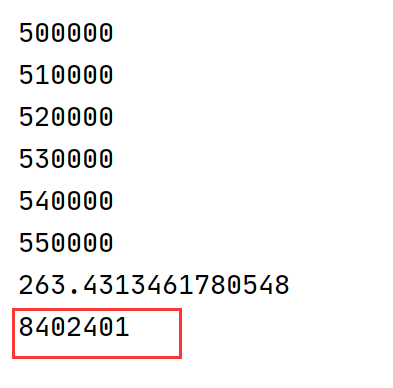
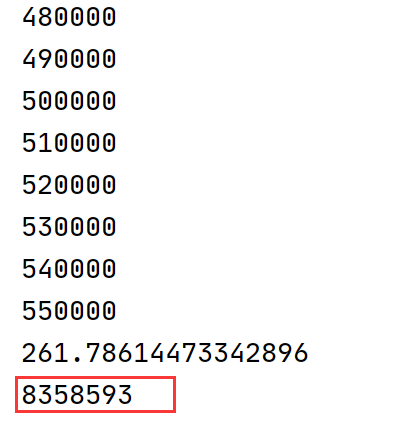
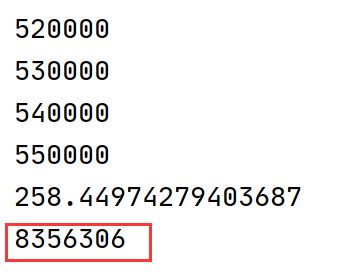
======================================
新的实现运行性能:

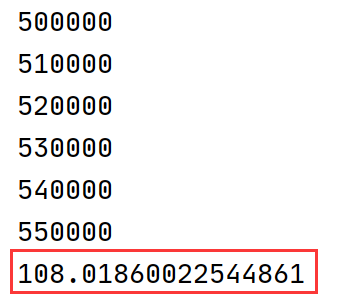
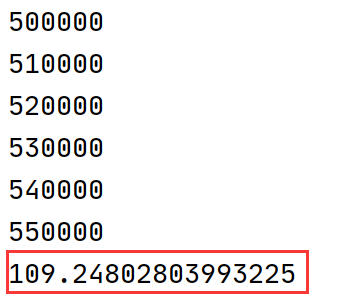
======================================
可以看到原实现代码需运行250秒,而新实现代码需运行100秒左右,这两个实现的区别主要在于抽样出的一个状态(4帧画面)之中如果有一个episode的起始帧该如何处理。
原实现中对于一个抽样状态(4帧)中有episode起始帧时就放弃掉这个状态重新选择,而新实现中对该种情况进行处理而不是放弃这个抽样状态。
原始实现代码中50万次的成功抽样是从大约830万+50万=880万中进行的,可以看到原始实现代码中失败的次数是成功抽样次数的十多倍,由于有过多的失败抽样所以原实现代码性能要慢1.5倍。
分析后我们知道关键的区别在于对于抽样状态中有episode起始帧的情况是否应该放弃重新抽样,如果像原始实现中放弃后重新抽样虽然会损耗掉一点性能但是抽样质量较高,而且对于十几小时甚至几十小时的总运行时间多运行3分钟的抽样其实对于总的运行性能影响不大。新实现的代码虽然可以提高一丢丢的运行性能但是抽样的样本质量会差于原实现代码,因此总的分析下来还是原实现代码更为好一些。
==================================
运行硬件CPU:intel 10700k
==================================
以上这两个实现对于边界条件并不是很严格,对此又修订了一版本,采用对state状态中有episode起始帧的情况进行放弃重新抽样:
# encoding:UTF-8 """Code from https://github.com/tambetm/simple_dqn/blob/master/src/replay_memory.py""" import random import numpy as np class ReplayBuffer(object): def __init__(self, args): self.capacity = args.buffer_capacity # 缓存池的总容量 self.dims = (args.screen_height, args.screen_width) # 一帧图像的高、宽 self.history_length = args.history_length # 一个状态,state的历史数据长度 self.n = args.multi_steps # multi steps 步数 self.discount = args.discount # reward的折扣率 # 判断设置是否正确 assert self.history_length >= 1 # history_length,状态state由几帧图像组成,大小至少为1 assert self.n >= 1 self.index = 0 # 指针指向的索引号,下一帧数据插入的位置 self.total = 0 # buffer中已填充的个数 self.reward_n_step_scaling = np.array([self.discount ** i for i in range(self.n)]) """ replay buffer 定义经验池 s,a,r,s_next,terminal """ self.states = np.empty((self.capacity,) + self.dims, dtype=np.uint8) self.actions = np.empty(self.capacity, dtype=np.uint8) self.rewards = np.empty(self.capacity, dtype=np.float32) self.non_terminals = np.empty(self.capacity, dtype=np.uint8) def append(self, state, action, reward, terminal): assert state.shape == self.dims # 判断传入的游戏画面维度是否符合设定 self.states[self.index, ...] = state self.actions[self.index] = action self.rewards[self.index] = reward self.non_terminals[self.index] = not terminal self.total = max(self.total, self.index + 1) # 当前buffer中现有存储数据的大小 # 加入新值后,指针位置自动加一 self.index = (self.index + 1) % self.capacity def _get_samples(self, index_array): all_states = self.states[index_array, ...] all_actions = self.actions[index_array] all_rewards = self.rewards[index_array] all_non_terminals = self.non_terminals[index_array] ### s, s_next states = all_states[:, :self.history_length, ...] next_states = all_states[:, self.n:self.n + self.history_length, ...] ### a actions = all_actions[:, self.history_length - 1] actions = np.asarray(actions, dtype=np.int32) ### r _rewards = all_rewards[:, self.history_length - 1: -1] rewards = np.matmul(_rewards, self.reward_n_step_scaling) ### non_terminals non_terminals = all_non_terminals[:, self.history_length + self.n - 1] return states, actions, rewards, next_states, non_terminals def sample(self, batch_size): assert self.total > self.history_length + self.n # 最小容量大于一次抽样的数据大小 # sample random indexes idxes = [] if self.total == self.capacity: ### full while len(idxes) < batch_size: idx = random.randint(0, self.capacity - 1) if (self.index - idx) % self.capacity > self.n and \ (idx - self.index) % self.capacity >= self.history_length - 1: ab = np.arange(idx - self.history_length + 1, idx + self.n + 1) % self.capacity cd = ab[:-1] if np.any(self.non_terminals[cd] == 0): continue else: idxes.append(ab) else: ### not full while len(idxes) < batch_size: idx = random.randint(self.history_length - 1, self.index - 1 - self.n) ab = np.arange(idx - self.history_length + 1, idx + self.n + 1) cd = ab[:-1] if np.any(self.non_terminals[cd] == 0): continue else: idxes.append(ab) idxes = np.asarray(idxes) return self._get_samples(idxes)
运行性能:
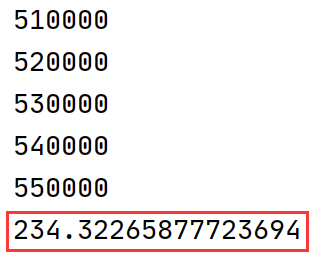
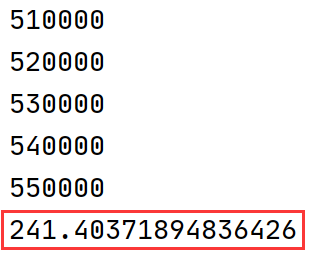
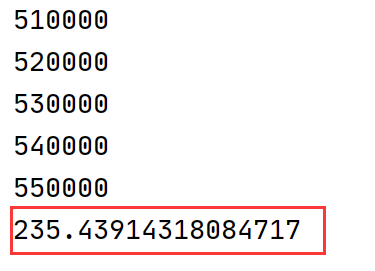
可以看到性能得到保持,但是修改版对边界条件有了更好的判断,该修订版作为DQN的experience buffer的最新推荐实践版本。
